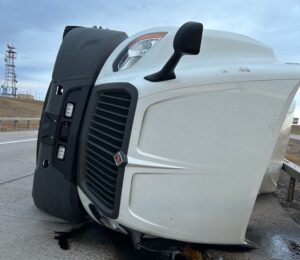LITTLE ROCK, Ark. — The average price for a gallon of diesel fuel has risen to $4.604 per gallon, up from $4.524 on Jan. 16, according to the Energy Information Administration (EIA).
EIA statistics show that the highest price for a gallon of diesel is in California at $5.484 per gallon, and the lowest can be found along the Gulf Coast at $4.320.
Rising oil prices and increasing demand are to blame, according to energy experts.
Benchmark U.S. crude oil for March delivery rose 86 cents to $81.01 a barrel Thursday. Brent crude for March delivery rose $1.35 to $87.47 a barrel.
RECESSION FEARS
The second consecutive quarter of economic growth that the government reported on Jan. 26 underscored that the nation isn’t in a recession despite high inflation and the Federal Reserve’s fastest pace of interest rate hikes in four decades.
Yet the U.S. economy is hardly in the clear. The solid growth in the October-December quarter will do little to alter the widespread view of economists that a recession is very likely sometime this year.
For now, the economy expanded at a 2.9% annual rate in the fourth quarter, though some of the underlying figures weren’t as healthy. Consumer spending, for example, grew at a slower pace than in the previous quarter, and business investment was weak. Last quarter’s growth was fueled by factors that won’t likely last. These include companies’ restocking of inventories and a drop in imports, which meant that more spending went to U.S.-made goods.
Increased borrowing rates and still-high inflation are expected to steadily weaken consumer and business spending. Businesses will likely pare expenses in response, which could lead to layoffs and higher unemployment. And a likely recession in the United Kingdom and slower growth in China will erode the revenue and profits of American corporations. Such trends are expected to cause a U.S. recession sometime in the coming months.
Still, there are reasons to expect that a recession, if it does come, will prove to be a comparatively mild one. Many employers, having struggled to hire after huge layoffs during the pandemic, may decide to retain most of their workforces even in a shrinking economy.
Last year, the Fed raised its benchmark interest rate seven times, from zero to a range of 4.25% to 4.5%. The Fed’s policymakers have projected that they will keep raising their key rate until it tops 5%, which would be the highest level in 15 years. As borrowing costs swell, fewer Americans can afford a mortgage or an auto loan. Higher rates, combined with inflated prices, could deprive the economy of its main engine — healthy consumer spending.
Fed officials have made clear that they’re willing to tip the economy into a recession if necessary to defeat high inflation, and most economists believe them. Many analysts envision a recession beginning as early as the April-June quarter this year.
So what is the likelihood of a recession? Here are some questions and answers:
WHY DO MANY ECONOMISTS FORESEE A RECESSION?
They expect the Fed’s aggressive rate hikes and high inflation to overwhelm consumers and businesses, forcing them to slow their spending and investment. Businesses will likely also have to cut jobs, causing spending to fall further.
Consumers have so far proved remarkably resilient in the face of higher rates and rising prices. Still, there are signs that their sturdiness is starting to crack.
Retail sales have dropped for two months in a row. The Fed’s so-called beige book, a collection of anecdotal reports from businesses around the country, shows that retailers are increasingly seeing consumers resist higher prices.
Credit card debt is also rising — evidence that Americans are having to borrow more to maintain their spending levels, a trend that probably isn’t sustainable.
More than half the economists surveyed by the National Association for Business Economics say the likelihood of a recession this year is above 50%.
WHAT ARE SOME SIGNS THAT A RECESSION MAY HAVE BEGUN?
The clearest signal would be a steady rise in job losses and a surge in unemployment. Claudia Sahm, an economist and former Fed staff member, has noted that since World War II, an increase in the unemployment rate of a half-percentage point over several months has always signaled a recession has begun.
Many economists monitor the number of people who seek unemployment benefits each week, a gauge that indicates whether layoffs are worsening. Weekly applications for jobless aid actually dropped last week to a historically low 190,000. Employers continue to add many jobs, causing the unemployment rate to fall in December to 3.5%, a half-century low, from 3.7%.
ANY OTHER SIGNALS TO WATCH FOR?
Economists monitor changes in the interest payments, or yields, on different bonds for a recession signal known as an “inverted yield curve.” This occurs when the yield on the 10-year Treasury falls below the yield on a short-term Treasury, such as the three-month T-bill. That is unusual. Normally, longer-term bonds pay investors a richer yield in exchange for tying up their money for a longer period.
Inverted yield curves generally mean that investors foresee a recession that will compel the Fed to slash rates. Inverted curves often predate recessions. Still, it can take 18 to 24 months for a downturn to arrive after the yield curve inverts.
Ever since July, the yield on the two-year Treasury note has exceeded the 10-year yield, suggesting that markets expect a recession soon. And the three-month yield has also risen far above the 10-year, an inversion that has an even better track record at predicting recessions.
WHO DECIDES WHEN A RECESSION HAS STARTED?
Recessions are officially declared by the obscure-sounding National Bureau of Economic Research, a group of economists whose Business Cycle Dating Committee defines a recession as “a significant decline in economic activity that is spread across the economy and lasts more than a few months.”
The committee considers trends in hiring. It also assesses many other data points, including gauges of income, employment, inflation-adjusted spending, retail sales and factory output. It puts heavy weight on a measure of inflation-adjusted income that excludes government support payments like Social Security.
Yet the NBER typically doesn’t declare a recession until well after one has begun, sometimes for up to a year.
DOES HIGH INFLATION TYPICALLY LEAD TO A RECESSION?
Not always. Inflation reached 4.7% in 2006, at that point the highest in 15 years, without causing a downturn. (The 2008-2009 recession that followed was caused by the bursting of the housing bubble).
But when it gets as high as it did last year — it reached a 40-year peak of 9.1% in June — a downturn becomes increasingly likely.
That’s for two reasons: First, the Fed will sharply raise borrowing costs when inflation gets that high. Higher rates then drag down the economy as consumers are less able to afford homes, cars and other major purchases.
High inflation also distorts the economy on its own. Consumer spending, adjusted for inflation, weakens. And businesses grow uncertain about the future economic outlook. Many of them pull back on their expansion plans and stop hiring. This can lead to higher unemployment as some people choose to leave jobs and aren’t replaced.
The Associated Press contributed to this report.
The Trucker News Staff produces engaging content for not only TheTrucker.com, but also The Trucker Newspaper, which has been serving the trucking industry for more than 30 years. With a focus on drivers, the Trucker News Staff aims to provide relevant, objective content pertaining to the trucking segment of the transportation industry. The Trucker News Staff is based in Little Rock, Arkansas.















This problem will only stop when the Fed’s start charging the executives of oil companies with the crime of price fixing.The shortage of diesel is caused by planned shut downs in order to create an artificial lack of supply.There will be record profits again this quarter,and you can guess who profits the most the oil executives and there share holders.l’m all for keeping the government out of the affairs of both big and small companies but that does include driving the economy into a recession for for profit of the top 1% of the population.